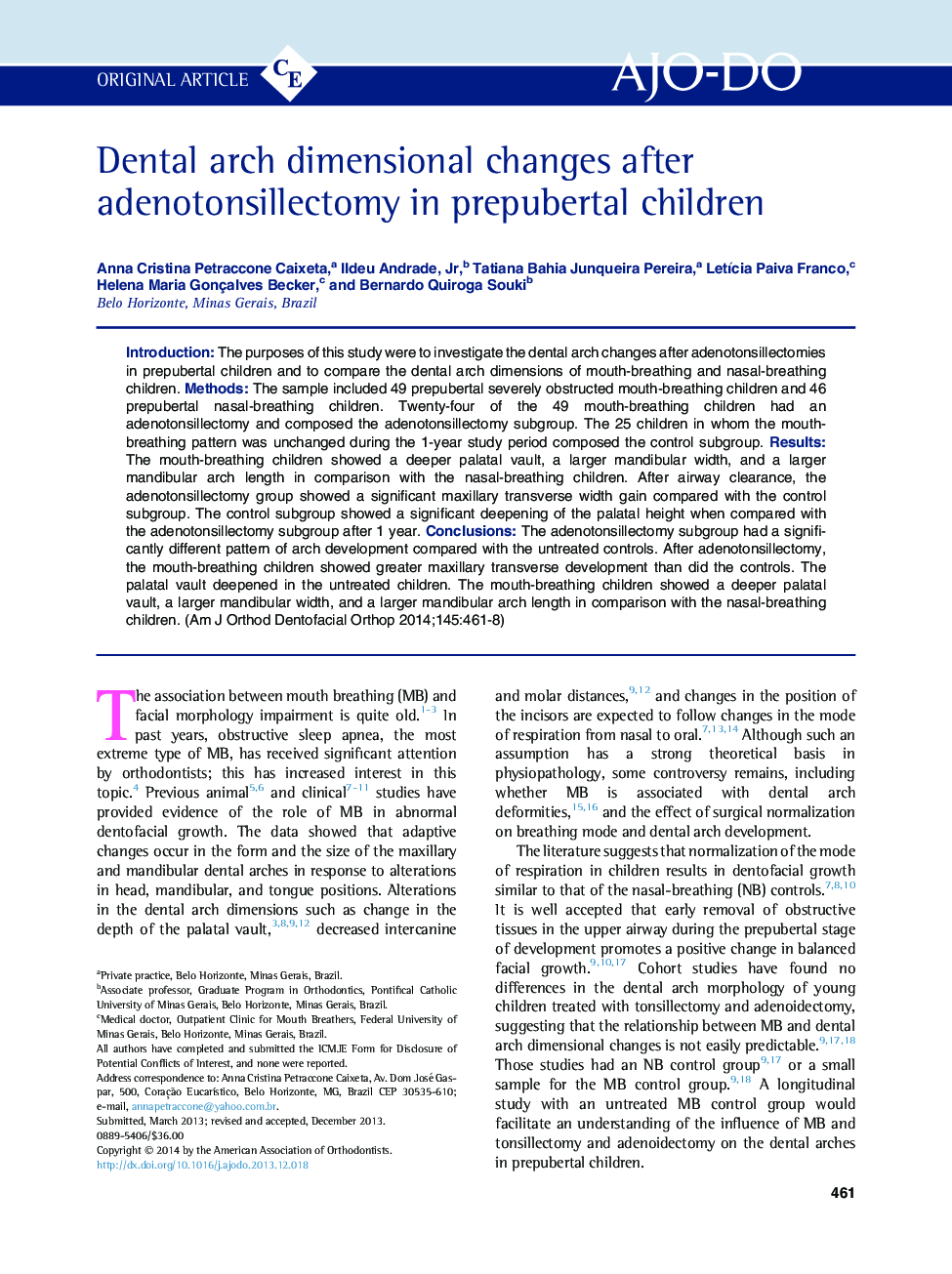| Article ID | Journal | Published Year | Pages | File Type |
|---|---|---|---|---|
| 3115977 | American Journal of Orthodontics and Dentofacial Orthopedics | 2014 | 8 Pages |
IntroductionThe purposes of this study were to investigate the dental arch changes after adenotonsillectomies in prepubertal children and to compare the dental arch dimensions of mouth-breathing and nasal-breathing children.MethodsThe sample included 49 prepubertal severely obstructed mouth-breathing children and 46 prepubertal nasal-breathing children. Twenty-four of the 49 mouth-breathing children had an adenotonsillectomy and composed the adenotonsillectomy subgroup. The 25 children in whom the mouth-breathing pattern was unchanged during the 1-year study period composed the control subgroup.ResultsThe mouth-breathing children showed a deeper palatal vault, a larger mandibular width, and a larger mandibular arch length in comparison with the nasal-breathing children. After airway clearance, the adenotonsillectomy group showed a significant maxillary transverse width gain compared with the control subgroup. The control subgroup showed a significant deepening of the palatal height when compared with the adenotonsillectomy subgroup after 1 year.ConclusionsThe adenotonsillectomy subgroup had a significantly different pattern of arch development compared with the untreated controls. After adenotonsillectomy, the mouth-breathing children showed greater maxillary transverse development than did the controls. The palatal vault deepened in the untreated children. The mouth-breathing children showed a deeper palatal vault, a larger mandibular width, and a larger mandibular arch length in comparison with the nasal-breathing children.
